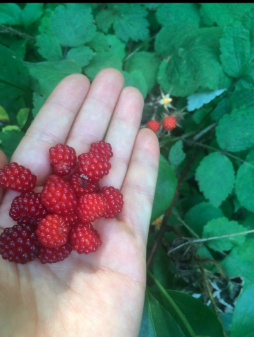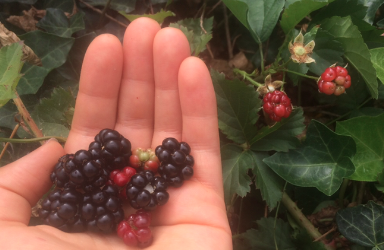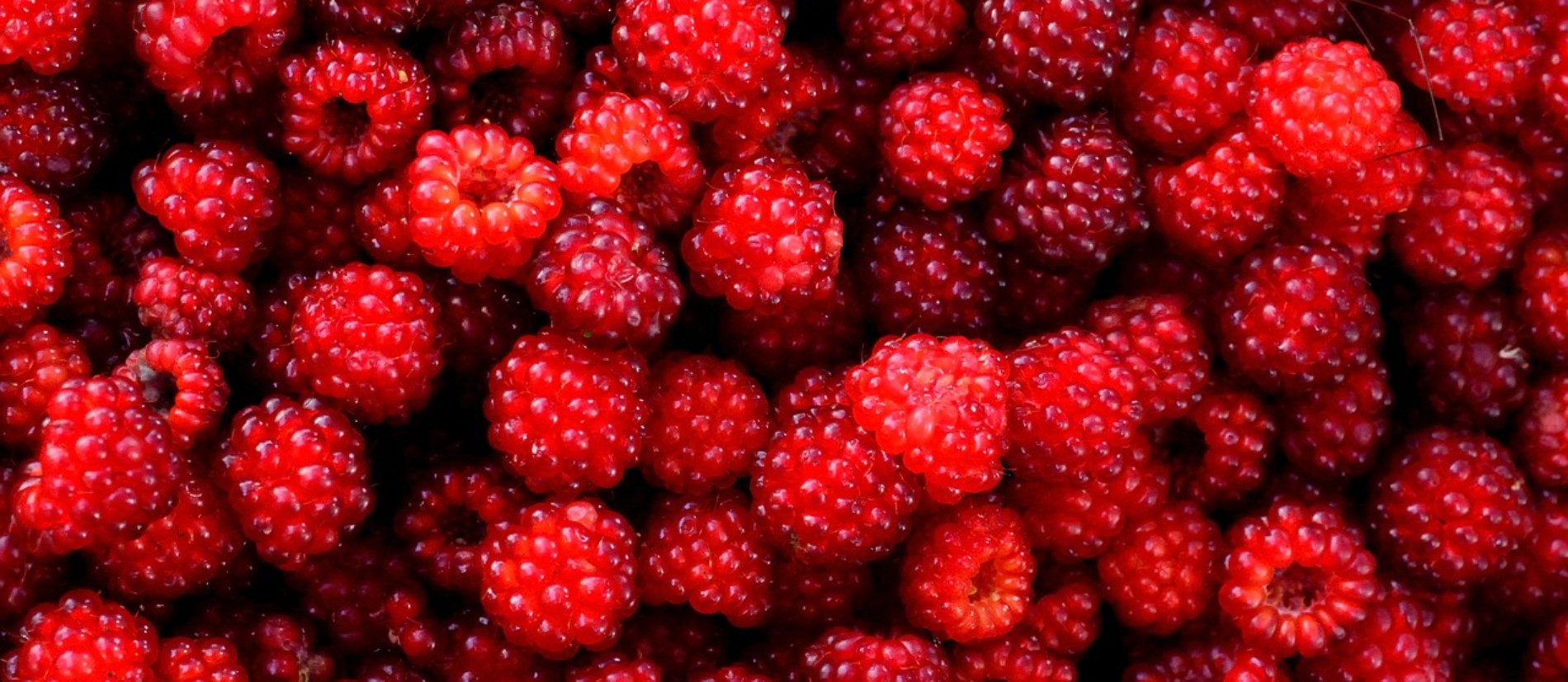This year, there is particular comfort in the markings of the seasons that have stayed the same. June (and July!) is told by berries–mulberries, juneberries, wineberries, strawberries, blueberries. When you know how to look, you can see the abundance everywhere in Maryland– the city, suburbs, and countryside.
In our second blog post of this series, we will demonstrate how to identify and harvest wineberries. Wineberries look and taste quite similar to raspberries and blackberries, and grow on red-purple arched canes. You’ll identify the bushy canes by their fuzzy, slightly hairy branches that cane and vine into the plants around them. They can be eaten right off the shrub, or baked into pies, cookies, tarts, and jams. There will also be some philosophical musings throughout the series about the “foraging ethic”–the “economy of reciprocity,” as ecologist Robin Wall Kimmerer describes in “Braiding Sweetgrass.” We will also skim some of the history that surrounds these fruits of the season.
Wineberries:
Though Wineberries are originally from Japan, they grow all over the forests and parks of Maryland. They grow so prolifically, sometimes so thickly that they are considered a weed. Their leaves look similar to blackberries and raspberries, with a three leaf pattern and cluster with two small toothed almond-shaped leaves meeting at the base of the stem, and one large peach shaped leaf at the terminal end of the stem, perpendicular to the two smaller leaves. The leaves tend to be bright green–even lime green.

They produce little while flowers in clusters that mature into individual sticky, hairy, reddish-pink caps that eventually turn into the bright red berries. The berries come off the bush with a gentle little tug of each individual berry. They leave a yellow star shaped cone behind them. You’ll feel a slight stickiness on your fingers from the berries. Though the berry’s little clusters tend to break apart with pressure, I suggest putting them on your thumbs like a thimble (or an olive)!
Like mulberries, wineberries are best eaten that day or the next. They have a short shelf life, so the best way to store wineberries by freezing them, dehydrating them, or getting right to baking or cooking.
Here are some ideas on how to use wineberries:
- Wineberry Preserves
- Wineberry and Lemon Balm Sorbet
- Nutella Raspberry (Wineberry) Gyoza
- Wineberry Cobbler
Cheers to a bountiful harvest! Please post in the comments about your harvest or cooking experience, or tag @marylandnature on instagram in your Wineberry posts!

Check out NHSM’s Wild Edibles expert Nick Spero’s video on how to identify both Wineberries and Blackberries!

